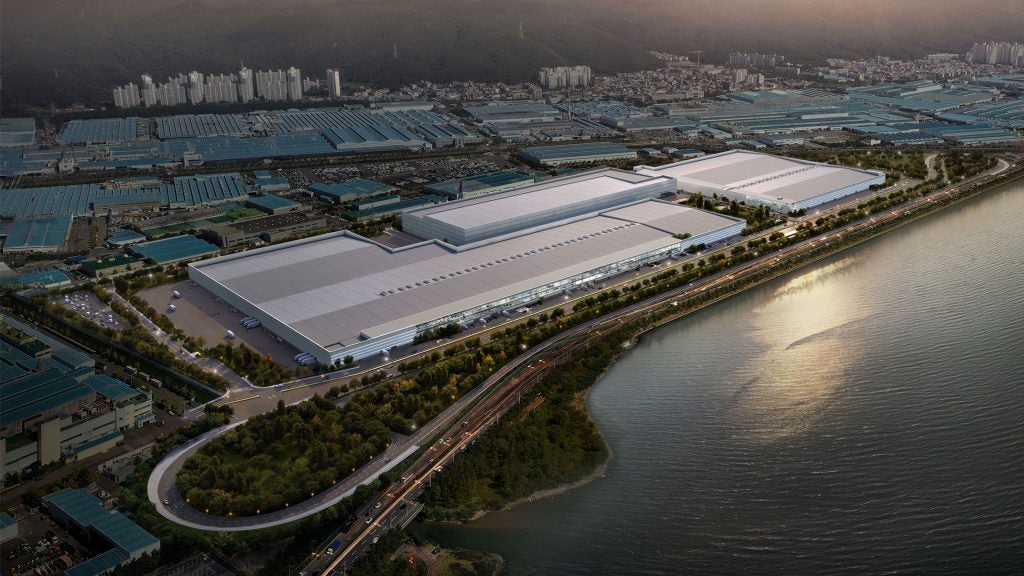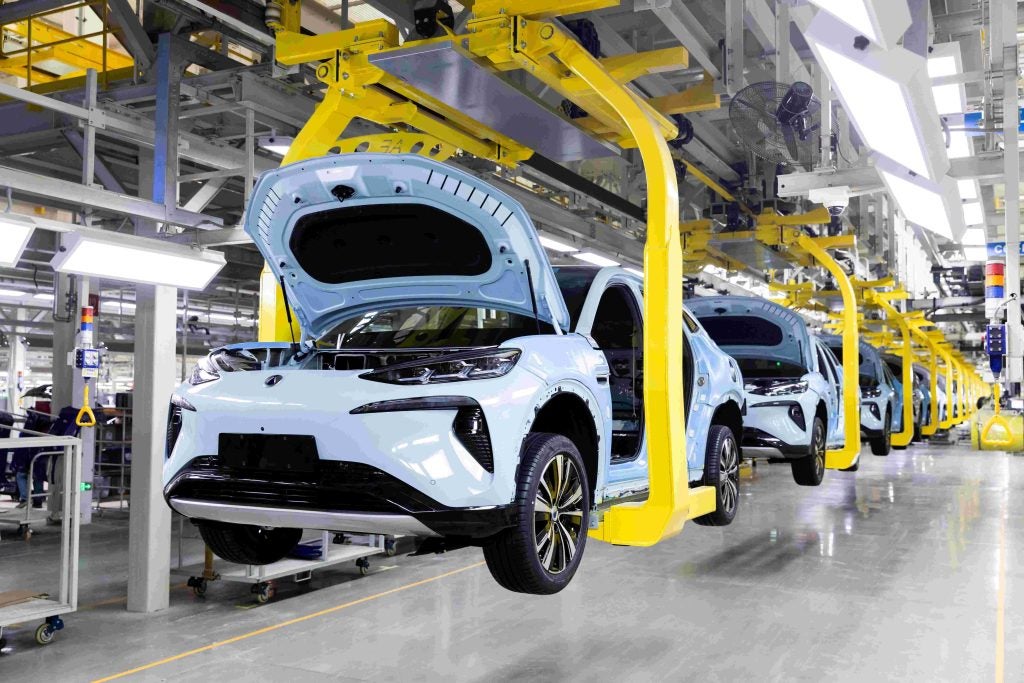In this month’s three-part management briefing, Mark Bursa takes a close look at the development and changing structure of China’s automotive industry. Part 1 considers the current state of China’s auto industry and the outlook.
Ten years of feast with no hint of famine – that’s the story of the Chinese automotive sector in the 21st century.
In 2002, the year the car market suddenly started to accelerate, annual sales reached 1.2 million. And the growth just continued as China morphed from an old-style Communist state into a kind of entrepreneur-driven capitalist market. The only thing that differentiates it now from western markets is the absence of democracy.
The Party still rules, but competition is rife, and encouraged, with regional governments battling to attract local investment. Entrepreneurs are encouraged. Private companies such as Chery and Geely have met few obstacles, even though their initiatives have been, on the face of it, contrary to the stated Government policy of building giant, centralised automakers.
In reality, the sheer scale of China’s expansion has forced the abandonment of any plans to keep tight controls on the industry. China has effectively left the auto sector open to market forces – though leaving in place certain restrictions on foreign ownership.
Vehicle sales in China soared by 32% to 18.06m units in 2010 according to the China Association of Automobile Manufacturers (CAAM). Passenger car sales in 2010 were put at 13.8m units, 33% ahead of 2009’s total, and more than 10 times bigger than the 2002 market. China overtook the US to become the biggest car market in the world in 2009, years ahead of forecasts, as the US ‘Big Three’ struggled with an imploding domestic market
How well do you really know your competitors?
Access the most comprehensive Company Profiles on the market, powered by GlobalData. Save hours of research. Gain competitive edge.

Thank you!
Your download email will arrive shortly
Not ready to buy yet? Download a free sample
We are confident about the unique quality of our Company Profiles. However, we want you to make the most beneficial decision for your business, so we offer a free sample that you can download by submitting the below form
By GlobalDataSo now the Chinese auto sector has two main ‘blocs’ of players. On one hand there are the giant Chinese state-owned automakers led by Shanghai Automotive Industries Corporation (SAIC), First Automobile Works (FAW) and Dongfeng Motor Corporation, whose business is largely made up of selling foreign-brand cars to the more wealthy echelons of Chinese society via major joint ventures with overseas OEMs.
On the other, there are the independents – Geely, Chery, Great Wall, BYD and many others, which have emerged in the past decade and have focused on building their own brands, selling cheaper cars to Chinese private buyers, often first-time purchasers.
Local-brand vehicles account for around one-third of the car market, while products of the JVs take up the remainder. China would like to see this shift in favour of the local nameplates, and has set a target of 44% local-brand vehicles by 2015.
This is likely to be achieved – and not just via the independent companies. The lines are becoming blurred, as everybody scrambles for a slice of the cake. A significant new trend has been the establishment of new Chinese brands under the auspices of the JVs – General Motors has pioneered this, with the likes of Honda and Volkswagen following.
Meanwhile, the independents have indicated that they are ready to get into bed with foreign automakers too – so the JVs will not be confined to just the established big players. And in the most extreme example of global outreach, Geely has completed the acquisition of Volvo Cars. Clearly the Chinese would like to do more of this – the problem is availability of foreign brands and the unwillingness of Western automakers to sell them.
Growth likely to slow in 2011 – but the market will still rise
Meanwhile, the big question remains whether or not the rapid growth of the industry is sustainable. As developed markets struggle with a deep recession, now fuelled by oil supply instability as Middle Eastern markets experience unprecedented political turmoil, China has continued its serene growth. Debt is not an issue for Chinese consumers, and thus the banking system has been largely immune from the West’s financial woes.
However, analysts are forecasting that 2010’s frenetic pace of growth in the world’s largest vehicle market will slow in 2011. The market is still expected to grow – but at a rate of around 10 to 15%, CAAM said, rather than 2010’s 33%. In January, the car market rose 12.6% to 965,238 units, according to the China Passenger Car Association.
And there is real evidence that Chinese cities are introducing measures to restrict car sales as the local road infrastructure struggles to cope with the traffic. Beijing has led the way here, and other Chinese cites are likely to follow Beijing’s example and impose restrictions on car ownership.
The market will also slow as a result of the ending of tax breaks that have helped drive the market up over the past two years. The Ministry of Finance withdrew small car incentives introduced during the global financial crisis. Sales tax on cars up to 1.6 litres, which account for around 60% of total vehicle sales, returned to 10% on January 1, 2011.
And there are efforts by the Chinese government to prevent the economy from overheating by raising interest rates, which will also curb car sales on finance.
Nevertheless, the car market could maintain much of its growth momentum on the back of a still strong economy and the spread of car ownership to inland cities as well as demand for replacement cars from the bigger cities.
Ownership levels are still extremely low compared to developed markets. Analysts Alix Partners told the Financial Times in October 2010 that car penetration in China was still very low, even compared with other emerging markets.
China’s light vehicle penetration in 2009 was only 30 per 1,000 people compared with 206 per 1,000 in Russia and 559 per 1,000 in Italy. But more and more households are passing the minimum income threshold to afford a car, with this number expected to double in the next five years from 35m to 70m households.
China had 79m cars on its roads in 2009, according to the National Bureau of Statistics and the number for 2010 is estimated to have swelled to 85.5m. And that will more than double in the coming decade. Wang Fuchang, the director of the Department of Equipment Industry under China’s Ministry of Industry and Information Technology, told the 2010 International Forum on the Development of the Chinese Automotive Industry that ownership in the country will exceed 200m cars by 2020.
Beijing and Shanghai lead the way on vehicle restrictions
In an effort to ease congestion and air pollution, Shanghai has imposed restrictions on car sales for almost 10 years. Beijing city authorities had traditionally fought shy of adopting such rules, introduced stringent restrictions on new vehicle registrations on January 1, 2011 – a sign that China is starting to realise the rampant growth in car sales is causing a major problem. Beijing city authorities announced they would only allow 240,000 new vehicle registrations this year – roughly one-third of 2010’s total.
A monthly average of 20,000 new vehicle registrations will be allowed in 2011, with private buyers accounting for 88% of the allocation, or 17,600 passenger vehicles per month. Individuals can submit just one vehicle registration application and must prove they are local Beijing residents, or foreigners who have been working in Beijing for at least a year.
A monthly lottery draw is held to determine the successful applicants. City authorities said they received 60,000 new online registration applications at the official website in the first three days of January – three times the monthly quota. Unsuccessful applications will be automatically included in the following month’s draw. “It could potentially reduce vehicle sales by up to 300,000 units,” said analysts IHS Global Insight, in Shanghai.
The eastern Chinese provinces of Jiangsu and Zhejiang are considering similarly measures, including requiring residents to purchase a dedicated parking space before buying a car. Indeed, parking spaces are becoming a national problem. Chongqing is short of 190,000 parking spaces and the deficit is growing by 400 spaces per day, according to People’s Daily. Xi’an, meanwhile, reports a deficit of roughly 400,000 parking spaces in a city where residents own around 1.1 million cars, according to hsw.auto.cn.
Some authorities are suggesting more radical restrictions. Zhou Jianqiao, a Zhejiang province committee member, told gasgoo.com: “Only businesses or individuals paying over CNY50,000 (US$7,600) of taxes annually should be allowed to purchase a vehicle.” Zhejiang is an eastern province bordering Shanghai to the north and its major cities include Hangzhou, Haining and Ningbo.
Still to come in this month’s management briefing…
Part 2 looks at JV strategies as well as new brands for new markets. Part 3 examines the rise of the ‘independent’ OEMs, their growing pains and export strategies.






